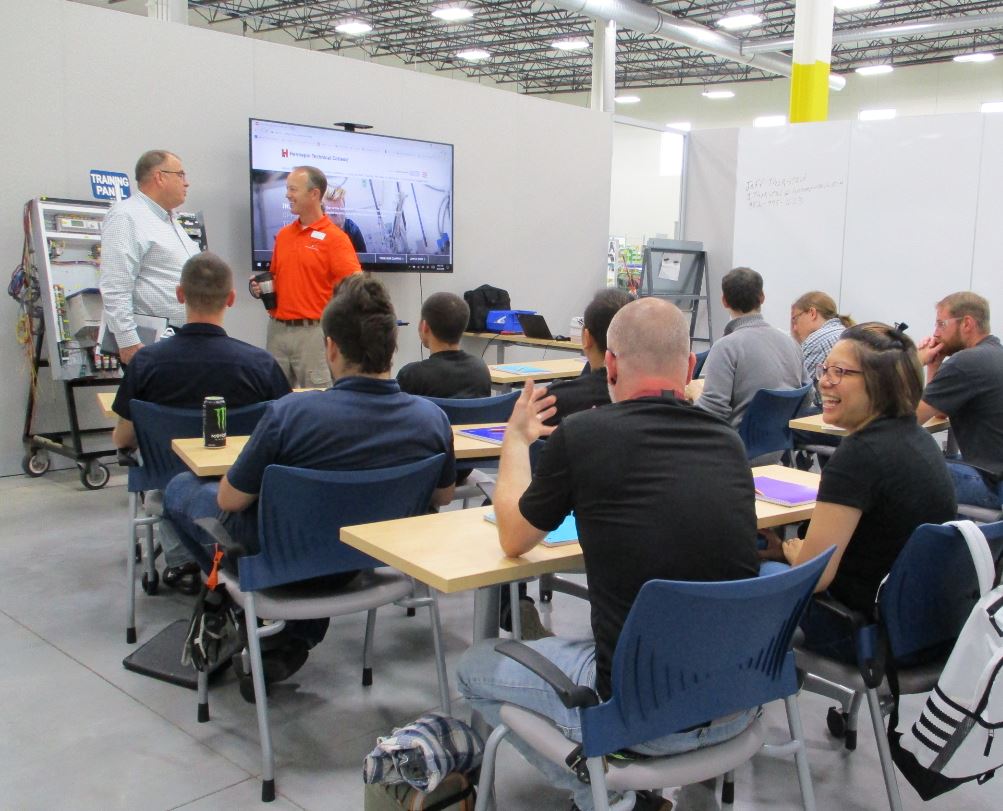Connecting Education to Industry
Non-Traditional Students: Connecting Education to Industry
Traditionally, manufacturers have looked to technical colleges to help fill open positions; however, this is becoming a challenge. We are in a time of historically low unemployment (3.7% nationally as of November 2018, and 2.8% in Minnesota). More progressive companies and colleges are working together to establish partnerships that provide training for current and future employees.
Establishing true partnerships provides comprehensive training for both current and future workers. Traditionally employers required employees to earn degrees before hiring, and did not encourage them to pursue further education. Likewise, college class schedules have been rigid and are not accommodating to people working full-time while balancing other demands of life. So how can we move forward from this point to ease the difficulty of finding new employees? To move forward from this point we need to understand the non-traditional student and establish collaboration between manufactures and technical colleges – creating a better understanding for industry needs.
Non-Traditional Students
When I have looked at the typical student enrolled in the Automation Robotics Engineering Technology (ARET) program at Hennepin Technical College, we can see that the traditional college student is actually in the minority of our program: 59% attend part-time, and 61% come from under-represented populations. Currently the average age of a student enrolled at Hennepin Technical College is 29.5 years.
What does this mean for education? Simply stated, if we are serving non-traditional students, we can no longer use traditional schedules. We need to find ways to meet our students where they are. In the ARET program, a few of the things we have done include:
- Offering onsite classes at their workplace
- Running each class section 1 day per week
- Adjusting class start times (8:00am, 1:00pm and 5:00pm)
- Treating courses as skill sets and eliminating most prerequisites
- Staggering schedules so students can attend classes on days that work for them
- Allowing students to take between 1 and 3 classes each day
Manufactures should understand who the non-traditional students are. Understanding these students means being more open and flexible to hiring inexperienced workers, providing training pathways that allow employees to pursue the education they need.
Collaboration
To best serve our current and future workforce, manufacturing and technical colleges can collaborate in different ways. Collaborative efforts can look like – working with employees to pick programs that develop and expand needed skill sets, working with schedules to allow employees to take required courses, and providing tuition reimbursement to employees through programs such as the Minnesota PIPELINE (Private Investment, Public Education, Labor and Industry Experience).
A company that has been innovative in collaborations efforts like this is Design Ready Controls. In August 2018 our ARET program started teaching for-credit classes on site at their facility because the 26-mile commute to our school did not work for most students. We modified curriculum, labs, and delivery methods to adapt to the needs of our non-traditional student. This change has allowed us to reach an additional 17 students.

Everyone Wins
The college receives the credits, employees are awarded added skills necessary for their jobs and a start on a college degree, and the employer benefits from their employees’ new skills and potential to move into other positions. Of course, not every company will have enough students to take this approach—but they can join together through local consortiums. Manufactures can work together to bring in enough students where the college is able to provide the localized training. This would allow a greater number of companies to take advantage of this type of collaboration.
Moving Forward
Colleges and employers must find new ways to provide training and support for new generations of workers. No single approach will work for all schools, industries, or cohorts of students—but any approach has the potential to benefit everyone if all parties are willing to adapt and collaborate. Education can no longer dictate how, when, and where individuals will be taught. Manufacturing and any industry experiencing a skilled labor gap cannot expect that every employee will come in with all needed skills fully developed. Companies must be willing to work with their employees to develop these aptitudes. Only when we work together can this be accomplished.

